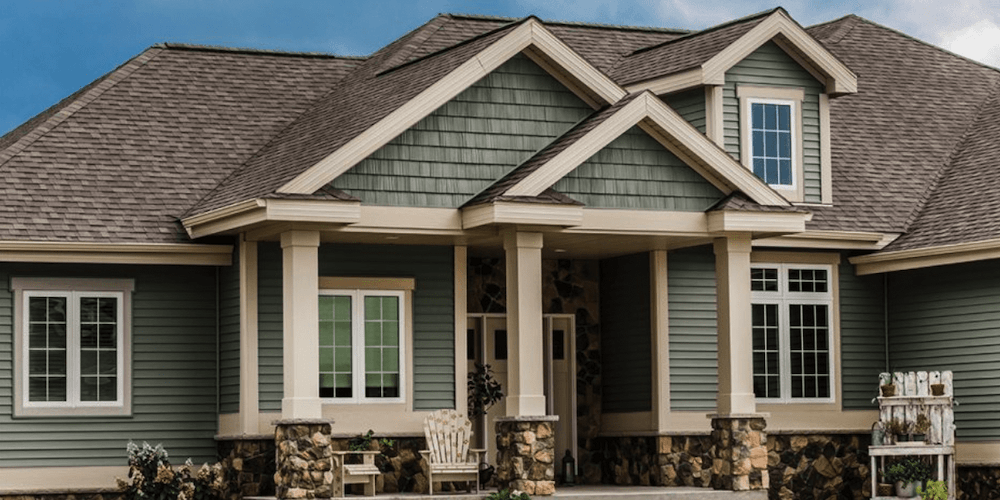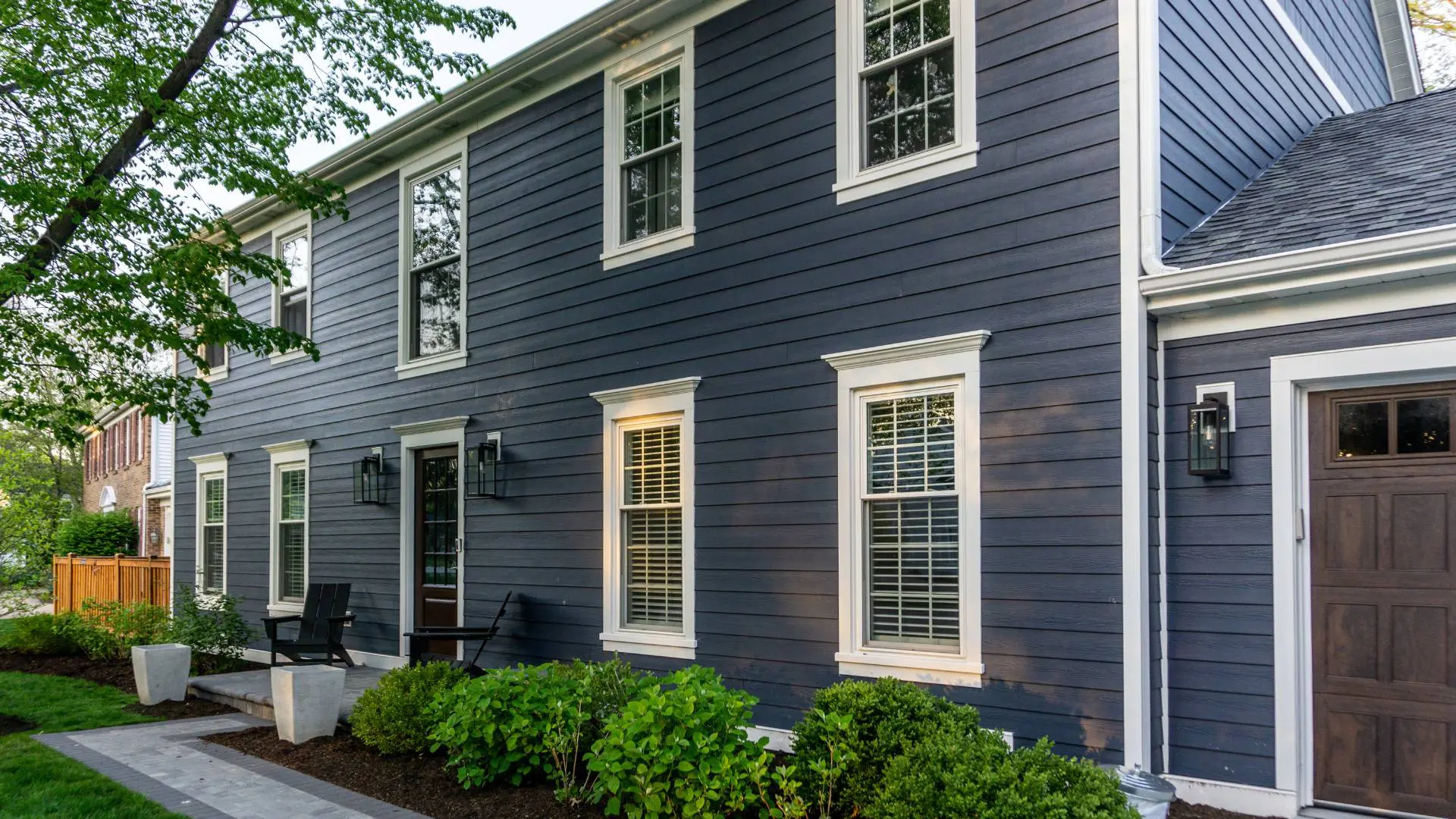Published on: August 21, 2025

Siding options in Spokane are about much more than curb appeal. It does more than just give your home a stunning exterior color and design. The protective power of siding is its primary function, while the visual appeal is completely secondary.
If it’s time to replace your siding in Spokane, you might be asking whether vinyl vs. fiber cement is best for the harsh winters. With an average snowfall of 48 inches per winter, Spokane puts homes and buildings through extreme weather.
Siding in the area must stand up to these extreme conditions by balancing durability, aesthetics, energy efficiency and cost.
Both vinyl and fiber cement offer similar benefits in these areas. We’ll help you balance the decision of what siding to buy with a clear comparison of your top options.
Winters in Spokane are truly picturesque. The snow-covered mountaintops make for a stunning backdrop as flurries begin to fall around your home. But the reality of this winter wonderland scene includes:
This weather demands siding that provides your home with thermal stability, moisture resistance and long-term durability. Both vinyl and fiber cement offer these characteristics.
First, let’s get an overview of vinyl siding vs. fiber cement siding to offer some insights into which might be better for your home.
Vinyl siding is made from polyvinyl chloride (PVC). It is the second-most common siding material, according to the annual data from the Census Bureau’s Survey of Construction, at 26% of homes featuring this siding. Coming in a close third place though is fiber cement at 21% of homes.
The most common characteristic that people know about vinyl siding is that it is low maintenance, which makes it an attractive option to homeowners. Here’s an overview of what you can expect if you have vinyl siding installed on your home.
Pros
Cons
Fiber cement siding is a mixture of cement, sand and cellulose fibers. These materials come together to make a robust and durable material. James Hardie is the most common and widely known fiber cement manufacturer, especially for homes in the Pacific Northwest.
Here’s a look at what you can expect if you have fiber cement siding installed on your Spokane, Washington, home.
Pros
Cons

To guide you in your decision about which siding material to install on your Spokane, Washington, home, here’s a comparison of several factors.
Vinyl siding: The constant freeze and thaw of Spokane weather will challenge vinyl siding to some degree. This can result in brittle siding that has an increased risk of cracking due to impact from objects like hail. You’re at a greater risk of warping and buckling due to thermal expansion and contraction, though proper installation reduces this risk immensely.
Fiber cement: Incredible durability is what fiber cement is known for. Despite Spokane’s freezing conditions, the siding won’t crack or warp. It will keep its stability, form and function even as temperatures change drastically.
Vinyl siding: With vinyl siding, you get a waterproof material. However, if improperly installed or damaged due to extreme weather, water can get behind the panels. Hidden moisture can lead to mold and rot over time, meaning you have to watch for flaws on vinyl siding carefully.
Fiber cement siding: When fiber cement is properly sealed and painted, it is resistant to water absorption. Your siding installation team will need to install it with great care to prevent issues with the siding, but when done well, fiber cement holds up against Spokane’s snow and ice melt.
Vinyl siding: Installing insulated vinyl siding can provide a slight edge over fiber cement’s energy efficiency. However, standard vinyl siding is not inherently insulating.
Fiber cement: The material is denser than that of standard vinyl siding, which can provide greater thermal insulation.
The house wrap that your contractor uses on your home will have a greater bearing on its energy efficiency than the choice between vinyl or fiber cement siding. Make sure to talk with your contractor about the house wrap they use before signing a contract with them.
Vinyl siding: One of the most attractive aspects of vinyl siding is that it is low maintenance. With no painting required and the ability to spray it off with a garden hose, there isn’t any siding material that offers a lower maintenance routine.
Fiber cement siding: In contrast, fiber cement does require some painting and sealing throughout its lifetime. UV exposure and moisture can wear down this protective barrier with time and it will fade faster than vinyl siding. Be prepared to paint fiber cement every 10-15 years.
Vinyl siding: On average, vinyl siding lasts 20-30 years, depending on the quality of the materials you select for your home and what it is exposed to environmentally.
Fiber cement siding: You’ll enjoy a longer lifespan with fiber cement siding of approximately 30-50 years. It can also provide the greatest return on investment (ROI) based on the 2024 Cost vs. Value Report. Fiber cement siding has an ROI of 88.4% while vinyl siding only has an ROI of 80.2%.
Fiber cement has an edge over vinyl siding for homes in Spokane, Washington. However, you have to balance your budget and find the maintenance routine that is right for you. If you don’t think you can keep up with the maintenance required for fiber cement, you won’t get the full lifespan from it, making it not as smart of a choice for your home. 2FL Windows, Siding and Roofing guides homeowners in navigating the decision between various siding materials. We’ll help you find the one that will protect your home while meeting your requirements. Schedule a free estimate with our team to learn more.
Further Reading:

Read the latest articles about siding.
